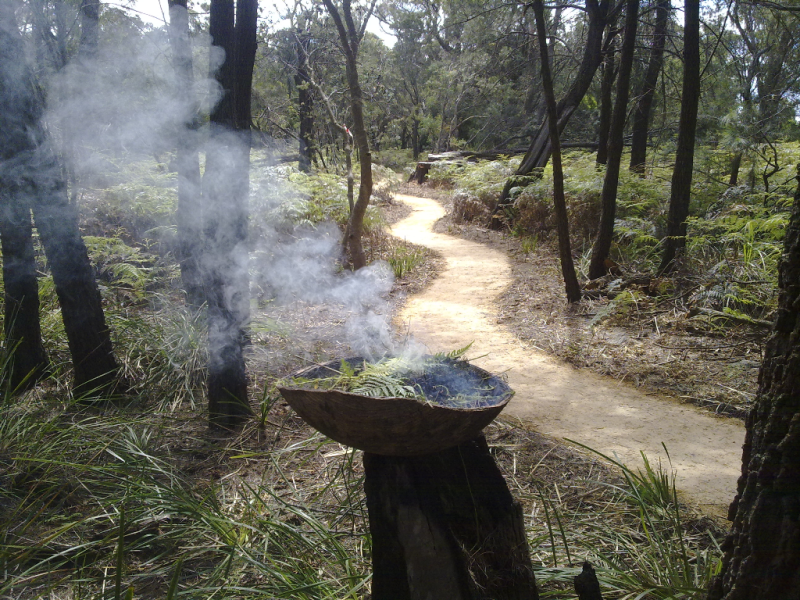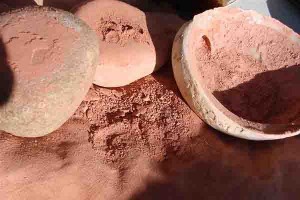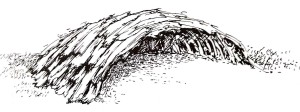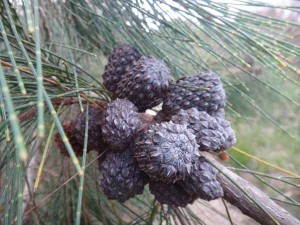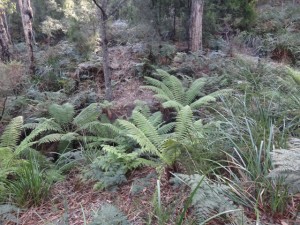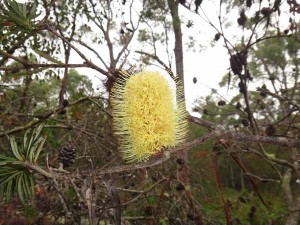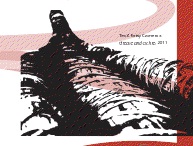A spiritual journey treading in the footsteps of the leenerrerter
“Yah Pulingina” -Welcome to Country. In respect and recognition of the leenerrerter the traditional owners of the coast and hinterlands around Bridport.
Bridport welcomes you to the coastal plains nation of the leenerrerter clan. The Bridport Walking Track circuit is on land that for over 35,000 years of Aboriginal history was a significant part of the lives of the Coastal Plains Nation. The Bridport area provided food, shelter and ceremonial placescapes for the leenerrerter clan. This clan was one of eight clans, or extended family groups, that made up the Coastal Plains Nation.
The leenerrerter clan belonged to the territory between the Little Forester River and Great Forester River. The river systems are important natural features to distinguish separate clan territories and nation boundaries.
Ochre was an important cultural resource for the leenerrerter . Aboriginal women obtained and prepared ochre. It was ground into a sacred powder and used for ceremonial body and tree marking. It was also mixed with grease to waterproof the body, hair and beards of the men. Present day Tasmanian Aborigines still consider ochre to be a special cultural resource. Polelerwine (red ochre) is highly prized.
Plants, trees and animals of the Bridport Walking Track Placescape are significant to Aboriginal cultural values, and surround you as you walk along the track and into Country. Aboriginal people made cutting and scraping tools from various types of rocks. The stone tools are scattered throughout this entire area. They used a variety of plants and animals for food and medicinal purposes. Bracken fern (Pteridium esculentum) and canygong (Carpobrotus rossii) or native pig face for example, was used for insect stings, bites and skin irritations. Some birds also formed part of their daily diet.
Permanent sheltered living places or large half-domed bark huts were constructed from peppermint gum (kinship tree) and swamp teatrees. Sheets of bark were cut using heavy stone axes and wedges pulled off in long strips and then interwoven. The structures were made by placing boughs in the ground to form a half-domed shape. One of the largest huts with a number of hearths placed around the front, was in the lower reaches of the Great Forester River. This measured 11 metres in length and was capable of sheltering between 30 and 40 people. Shelters were constructed close to women’s economic resources, and at the sites of leenerrerter social and ceremonial activities.
Plants, trees and animals of the Bridport Walking Track Placescape are significant to Aboriginal cultural values, and surround you as you walk along the track and into Country.A variety of bush foods; fruits, roots, tubers were significant sources of nutrition for the leenerrerter people and were collected by the
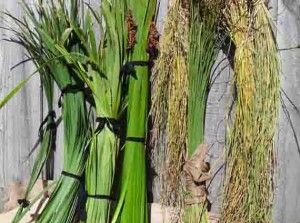 women. The edible plants included kangaroo apples (Solanum laciniatum) that grew to the size of plums, and hung in clusters. They were buried in warm sand dunes to encourage ripening and were eaten when they ripened to a rich orange colour. Smaller fruits and berries included wild cranberries (Astroloma humifusum), native currants (Leucopogon parviflorus), and native cherries (Exocarpus cupressiformis). All were collected and carried in tightly woven bags made from plant fibres such as the leaves of the white flag iris (Diplarenna moraea), lagoon or river reed (Schoenoplectus pungens) and blue berry flax (Dianella tasmanica). The young shoots of yakka or grass tree (Xanthorrhoea australis), were cut from the plants and ‘black man’s bread’ was dug from the ground and roasted on coals. The nuts and leaves of the sheoak (Casuarina littoralis) were chewed when small. Treefern (Dicksonia antarctica) pith was also a favoured food, as were the fleshy white root fibres of sweet rush (Lepidosperma gladiatum),water leeks and other sedges.
women. The edible plants included kangaroo apples (Solanum laciniatum) that grew to the size of plums, and hung in clusters. They were buried in warm sand dunes to encourage ripening and were eaten when they ripened to a rich orange colour. Smaller fruits and berries included wild cranberries (Astroloma humifusum), native currants (Leucopogon parviflorus), and native cherries (Exocarpus cupressiformis). All were collected and carried in tightly woven bags made from plant fibres such as the leaves of the white flag iris (Diplarenna moraea), lagoon or river reed (Schoenoplectus pungens) and blue berry flax (Dianella tasmanica). The young shoots of yakka or grass tree (Xanthorrhoea australis), were cut from the plants and ‘black man’s bread’ was dug from the ground and roasted on coals. The nuts and leaves of the sheoak (Casuarina littoralis) were chewed when small. Treefern (Dicksonia antarctica) pith was also a favoured food, as were the fleshy white root fibres of sweet rush (Lepidosperma gladiatum),water leeks and other sedges.
Aboriginal cultural plants found along the Bridport Walking Track include:
|
|
|
|
|
|
|
|
|
|
|
|
|
|
|
|
|
|
The Blending of Two Cultures
In 1798 Matthew Flinders and George Bass were on a voyage to prove the existence of Bass Strait. They met a clansman and his wife burning off vegetation near Waterhouse point and communicated using a sort of sign language that was clearly understood by both parties.
From about 1812 the northeast clans gathered at the seacoast to exchange goods and women with the men who had established homes on the small islands of Eastern Bass Strait. These men called themselves Straitsmen. Accompanied by their clan wives, they often sailed large wooden boats across Banks Strait to hunt kangaroo for skins and to gather swan eggs in the river estuaries and lagoons here and along the northeast coast.
In 1816 captain James Kelly and his crew including Straitsman George Briggs (Mannalargenna’s son in law) sailed by Bridport on the Elizabeth during their circumnavigation of Van Diemen’s Land. They made contact with Mannalargenna the Aboriginal leader at tebrakunna (Cape Portland) and his brother Tolobunganah at Eddystone Point. These two clan leaders made fires on the beach to attract the attention of the mariners; trade, song and dance resulted. Mannalargenna informed Briggs of his concerns that bushranger Michael Howe was in the region.
In 1831 George Augustus Robinson described the Bridport estuary as thickly covered with tea tree forests in water waist deep on the banks of the Great Forester River. He observed a large area where swans had made their nests that contained hundreds of eggs that were collected by the clanswomen as a favoured food. Robinson and his Trouwunnan (Tasmanian) guides, including Mannalargenna, were searching in the Bridport area for the few remaining clanspeople still surviving in the bush.
Cultural remains of past meals and stone tool making can still be found in the Anderson Bay area that testifies to the strong cultural association of the clans with their land. Aboriginal sites are protected and it is illegal to remove artefacts. Please respect all aboriginal cultural values on this land.
In the 1920s, Mrs E Grieg (nee Suter), recounted Aborigines visiting from the Bass Strait Islands and camping behind the sand dunes. The islanders exchanged salted mutton birds and shell necklaces for supplies from the Suter’s shop. They told stories of their ancestors and would drink tea with them.
Source: Patsy Cameron, Grease and Ochre, The blending of two cultures at the colonial sea frontier, 2011

